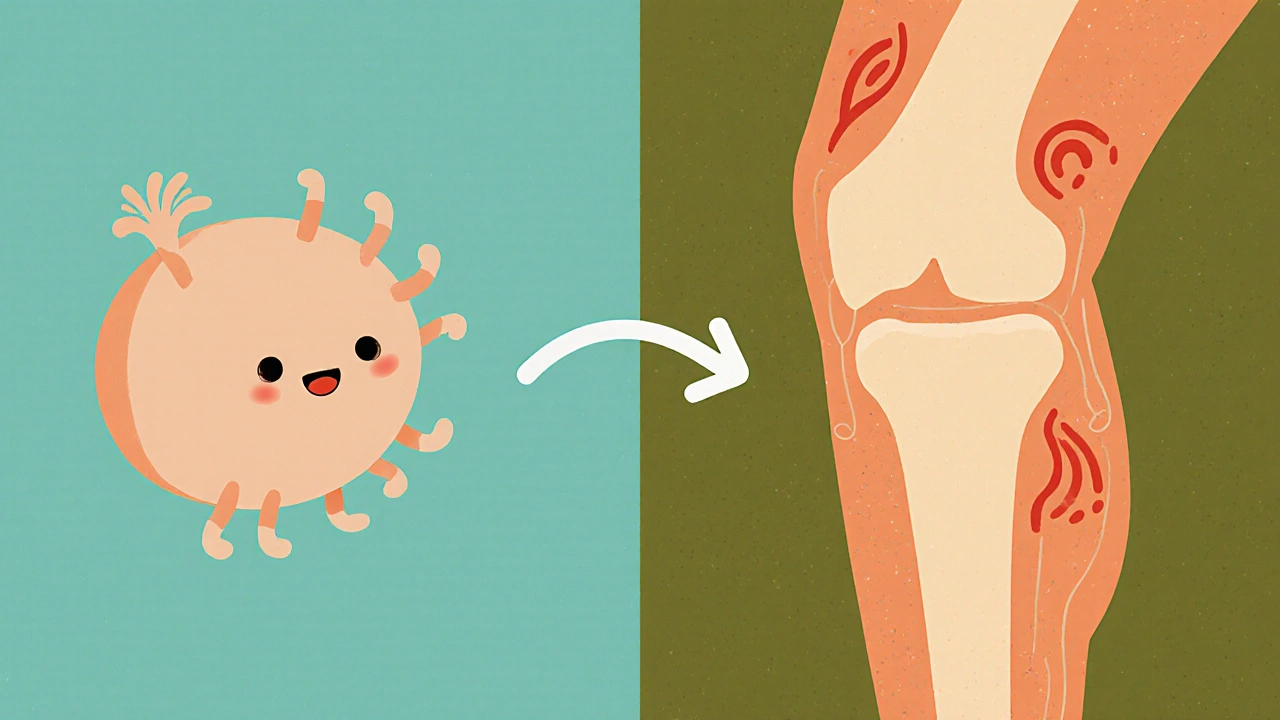Sexually Transmitted Infection Arthritis: What You Need to Know
When dealing with sexually transmitted infection arthritis, joint inflammation that follows an STI, often called reactive arthritis. Also known as STI‑related arthritis, it typically appears weeks after the infection and can affect knees, ankles, or the spine.
It is a subset of Reactive arthritis, an immune‑mediated joint disease triggered by infections elsewhere in the body, most commonly by Chlamydia trachomatis, a bacterial STI that infects the genital tract. Other culprits include Gonorrhea, caused by Neisseria gonorrhoeae and Syphilis, caused by Treponema pallidum. The immune system’s response to these microbes can mistakenly target joint tissue, leading to swelling, pain, and limited movement.
Key aspects of STI‑related arthritis
Typical symptoms show up 1–4 weeks after the initial infection. Patients often notice a sudden ache in one or several large joints, accompanied by stiffness that worsens after periods of rest. Skin changes such as painless ulcers or pustular lesions may appear on the soles or palms, and some people develop eye irritation known as conjunctivitis. Because the joint pain can mimic other rheumatic conditions, it’s easy to overlook the underlying STI.
Diagnosis rests on two pillars: confirming a recent STI and documenting joint inflammation. Labs will usually include nucleic‑acid‑amplification tests (NAAT) for Chlamydia and Gonorrhea, serology for Syphilis, and a complete blood count to check for elevated inflammatory markers like ESR or CRP. Imaging—usually an X‑ray or ultrasound—helps rule out structural damage and shows the characteristic joint effusion of reactive processes.
Treatment follows a three‑step approach. First, eradicate the infection with the appropriate antibiotics: doxycycline for Chlamydia, ceftriaxone for Gonorrhea, or penicillin for Syphilis. Second, control inflammation using NSAIDs such as ibuprofen or naproxen; if pain persists, a short course of low‑dose steroids may be added under medical supervision. Finally, physical therapy restores range of motion and prevents muscle loss. Most patients see significant improvement within a few months, though some may experience lingering stiffness that benefits from ongoing exercise and occasional joint‑protective supplements.
Understanding the link between STIs and joint health empowers you to catch the problem early and seek targeted care. Below you’ll find detailed guides on pain‑reliever comparisons, infection‑specific treatment tips, and lifestyle tweaks that can speed recovery and keep your joints moving comfortably.

Chlamydia and Reactive Arthritis: Understanding the Link
Explore how chlamydia infection can trigger reactive arthritis, covering symptoms, diagnosis, treatment, and prevention.
